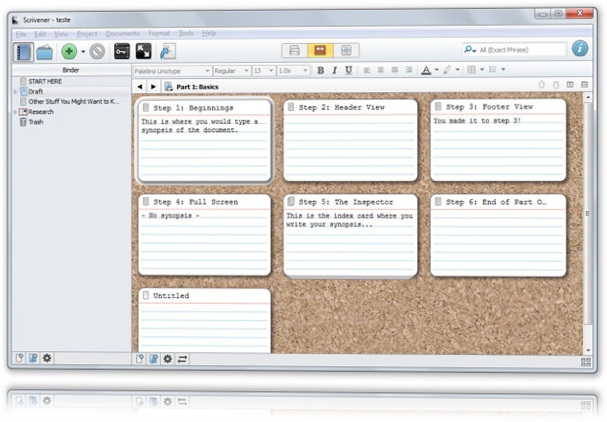

For example, Scrivener can be used for people transcribing a speech, or translators, in a manner that no other application can fully replicate on its own. Scrivener is intended to be useful for many different people, and the interface reflects this as well due to some of the settings you can change with it. If you use Scrivener on a regular basis, or you are someone who would benefit from the program itself I can see the UI becoming second nature to those who are prepared to work with it until they are understanding of it. The shortcut is Alt+Down, and since it is not a shortcut that is shared with other programs the chances of remembering it between uses of Scrivener are limited, assuming you do not use the program on a regular basis. The problem stems from the nature of the shortcut to change this, though. Along the bottom of the standard editing window, you can have a bar informing you of your word and character count, and this is enabled in the program by default. Having used Scrivener since one of its early Windows betas to test it out as a word processing application, and out of an interest in seeing how writers work, I toyed with different settings. Foobar2000 when things are installed incorrectly), you can still leave yourself unable to find certain features.
#Scrivener windows 7 software
While you cannot comprehensively break it like you can with some pieces of software (eg. The manner in which you can influence the Scrivener interface is arguably its own biggest downfall at times. At the same time the full-screen editing experience manages to drown out any need to view the interface until you need to alter the piece of text you are working on. The UI looks at least reasonably native, though understandably for a program never originally built for the Windows operating systems it is not completely flawless. In many ways the Main Toolbar exists only to complement the Binder, and if you find yourself agreeing with that, you will be pleased to know that Scrivener allows you to hide the Main Toolbar and use the application without it.
#Scrivener windows 7 full
The buttons along the top are used for some purposes, such as compiling your work, opting for a full screen writing experience, and adding new folders to the Binder. This is the primary tool for navigating the actual content within your work, rather than the traditional location of this navigation along the top of the program. One thing that remains constant is the Binder on the left hand side of the application. Nobody writes in the exact same manner, and therefore, the program is able to accommodate numerous writing styles. The Scrivener interface is compact and customizable, which is always a positive when dealing with writers. Since the program contains many different features and options I have tried to give as complete a review of what is available in the 1.0.2 version for Windows, though more features and revisions could be added at a later date.

Scrivener is aimed at writers professionals and otherwise. Therefore, I have done my best to review this program and bring Neowin readers a complete look at the application as well as my thoughts about it.

Actually describing Scrivener as anything apart from a suite of tools is difficult, since everything feels remarkably complete, even though the Windows version has only been available for a short time. Therefore, when the Windows version of the program came out of public beta and began to be considered as a complete program, I was eager to give it a go. Scrivener is a program I have been following since its arrival on Windows, and it has appealed to me due to its design decisions.


 0 kommentar(er)
0 kommentar(er)
